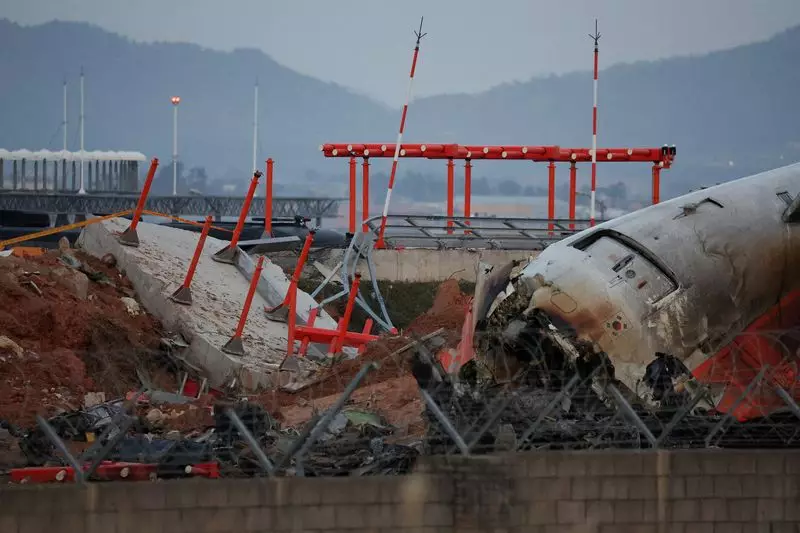On December 29, 2022, South Korea experienced its most tragic aviation disaster with the crash of Jeju Air flight 7C2216, resulting in the loss of 179 lives. As details emerge, the focus is on understanding the contributing factors to this catastrophe. The South Korean transport ministry has committed to a thorough investigation, promising a preliminary report to be unveiled shortly. This tragic event has raised questions not only about aviation safety protocols but also the environmental factors that might have played a role in the incident.
Investigators are particularly concerned with reports of bird strikes leading up to the crash. The pilots of the Boeing 737-800 reported avian activity moments before they declared a mayday. Eye-catching footage from airport CCTV has indicated that the aircraft did indeed make contact with birds during its go-around procedure. These environmental factors bring to light the broader challenges faced by airports globally in mitigating risks associated with wildlife, a noteworthy concern as bird strikes can pose serious threats during critical phases of flight like takeoff and landing.
The aftermath of the crash prompted immediate cooperation between multiple international agencies, including the U.S. National Transportation Safety Board and France’s Bureau of Enquiry and Analysis for Civil Aviation Safety. Such collaboration suggests the complexity and importance of gaining a comprehensive understanding of aviation incidents. By sharing data and expertise, investigators aim to produce a more thorough analysis of the factors leading to the crash, encompassing everything from technical malfunctions to environmental considerations.
The complexity of the investigation is underscored by the time needed to analyze flight data and cockpit voice recordings. Interestingly, the black box recordings ceased capturing data just over four minutes before the crash, complicating efforts to gain insight into the pilots’ final moments. Understanding the crew’s actions leading up to the incident is crucial for improving aviation safety protocols. The ministry also plans to assess the impact of aviation infrastructure; in this case, a concrete embankment that may have exacerbated the disaster’s severity.
As South Korea grapples with this tragedy, the next steps will be critical. Not only is there the immediate need to address any lapses in safety measures, but also a longer-term strategy must be devised to prevent future occurrences. The decision to remove the embankment reflects a proactive approach to aviation safety, reinforcing the idea that infrastructure plays a significant role in ensuring the safety of air travel.
The Jeju Air crash serves as a stark reminder of the inherent risks in aviation. The ongoing investigations will likely uncover critical data that could shape future safety regulations. As the global aviation community reflects on this disaster, the hope is that it will catalyze changes that enhance safety standards and protocols for the future.

